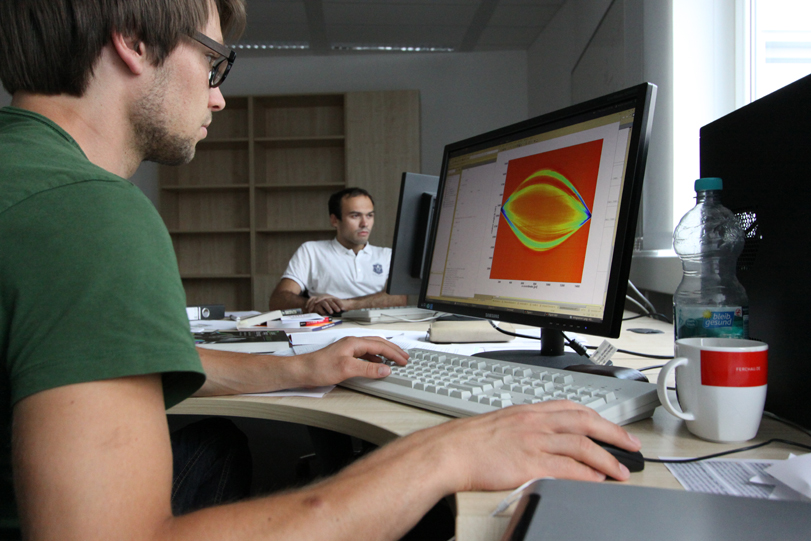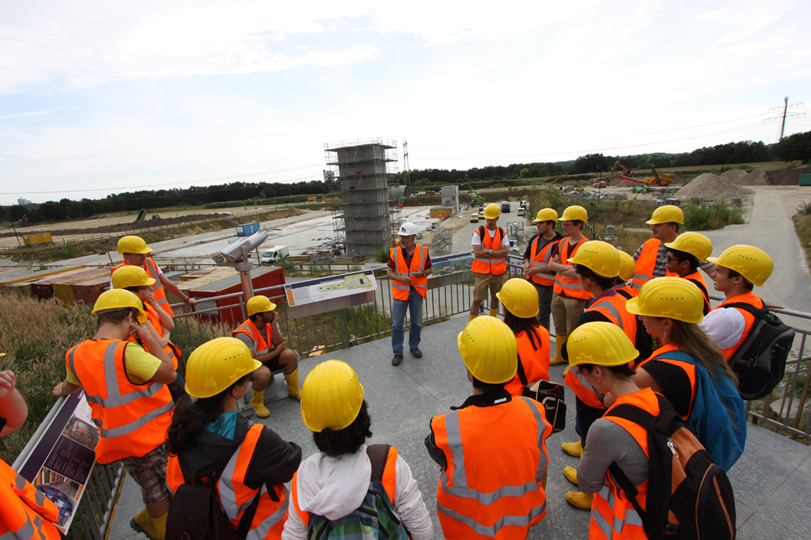Summer students assist with development of instruments and methods
Single Particles, Clusters, and Biomolecules (SPB) instrument group hosts students from Göttingen and Moscow
As scientists continue their research on components of the European XFEL, they can use a little help here and there. That’s where two summer students come in.
Malte Vaßholz of the University of Göttingen and Viktor Tkachenko of Moscow State University are both conducting research projects for the Single Particles, Clusters and Biomolecules (SPB) instrument of the European XFEL for 7 weeks this summer. The scientists they are helping, Andrew Aquila and Klaus Giewekemeyer, say the research team gains a lot of progress on developing the scientific instruments while the students acquire greater insight into photon physics.
“We get a lot out of it”, Giewekemeyer says. “It helps move along projects so we can focus our attention on further research”.

Giewekemeyer supervises Vaßholz’s work on the effect of diamond windows on X-ray beams, in which he studies the amount of distortion that diamond could cause to the beam. To function properly, many XFEL components need to exist in an ultrahigh vacuum environment, similar to the relatively matter-free environment experienced in outer space. However, not all scientific experiments can be conducted in such an environment. As a solution, the SPB scientists plan to separate the instrument into smaller chambers, each in a different level of vacuum, using barriers the X-ray beam can pass through with minimal disturbance. Diamond is one of the most suitable materials for X-ray windows since it contains just one relatively light element, carbon. Vaßholz is examining the properties of the diamond windows in order to determine exactly how much the diamond could perturb the path of the photons in the X-ray beam–which can adversely affect any subsequent experiment.
“It’s nice to have such a project I can work on independently, but still have the guidance of my supervisor”, Vaßholz says.
Meanwhile, Tkachenko is testing materials that can withstand the intense power of the European XFEL X-ray beam. The beam is so intense that it will disintegrate most materials that are in its path—which means the optics and instruments have to be carefully designed to survive and function effectively. Tkachenko is using data gathered by his supervisor Aquila at SACLA, the X-ray free electron laser in Hyogo Prefecture, Japan, to build a computer simulation showing the effect of the intense X-ray pulses on a variety of materials.
“This project will be useful for my Ph.D. in the future”, Tkachenko says.
Aquila says summer students commonly do become Ph.D. students for the same institution—meaning Tkachenko and Vaßholz may make returns to European XFEL.
“The students are understanding the instruments and the science behind them”, Aquila said. “It allows them to figure out their own methods and learn independently”.
For Vaßholz, one benefit of the program has been identifying his career goals.
“This showed me that photon science is the most interesting thing for me”, he says. “I will be continuing on with my Master’s and Ph.D. in it”.
